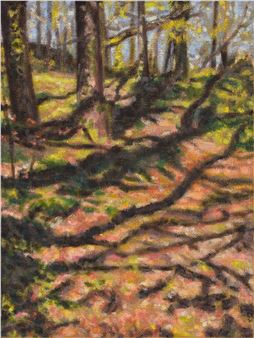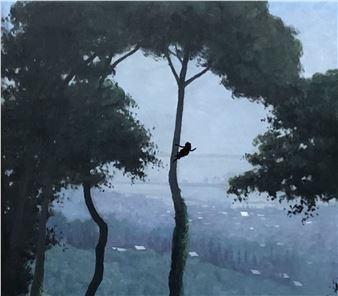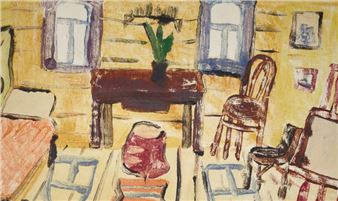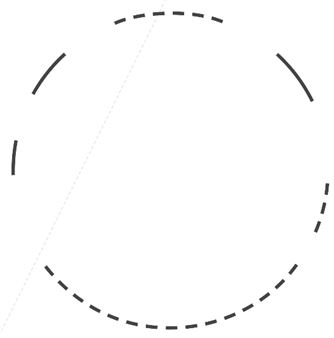Fundamental Lexicon. Contemporary Russian Art from the Sinara Foundation Collection
The Multimedia Art Museum, Moscow presents the exhibition вҖҳFundamental Lexicon. Contemporary Russian Art from the Sinara Foundation CollectionвҖҷ. This exhibition continues the museumвҖҷs long-term strategic programme вҖҳPrivate Collections at MAMMвҖҷ.
The Sinara Foundation was founded in 2022. Today it manages a collection of over 2000 works representing various periods in the history of Russian art since the late 19th century. The Sinara Foundation collection also includes iconic works by classic Russian contemporary art figures вҖ“ these works are displayed in the MAMM exhibition.
The exhibition title refers to Grisha BruskinвҖҷs work вҖҳFundamental LexiconвҖҷ (1986). In 1988 it participated in the legendary SothebyвҖҷs auction in Moscow, which proved a turning point in the artistic life of the USSR and introduced the world to contemporary Russian art, long hidden behind the Iron Curtain. BruskinвҖҷs painting, a visual catalogue of the signs and symbols of the Soviet era, sold for a record amount and immediately acquired the status of a cult work.
The works from the Sinara Foundation collection shown at the exhibition reflect the main, вҖҳfundamentalвҖҷ artistic strategies and trends of contemporary Russian art.
The exhibition spans the period from the 1950s to 2020s, bringing together artists who have defined the development of contemporary Russian art. Among them are former representatives of unofficial culture who are now recognised classics of Russian and international art: Ilya Kabakov, Viktor Pivovarov, Erik Bulatov, Oleg Vasiliev, Vladimir Yankilevsky, Leonid Sokov, Mikhail Roginsky, and others.
Also featured in the exhibition are items by artists of the next generation, whose work was formed on the eve of and during Perestroika, primarily in the legendary squat on Furmanny Lane. These include three members of the famous Mukhomory group вҖ“ Konstantin Zvezdochetov, Sergei and Vladimir Mironenko, as well as Sergei Volkov. Their work was largely a defining style for the Moscow art scene of the late 1980s and 1990s.
Timur Novikov was a recognised leader of Leningrad art life from the 1980s to the 2000s. The Sinara Foundation collection includes his paintings, as well as his renowned fabric appliquГ©s and silkscreen prints.
The exhibition also features pictures by artists who have shaped the artistic landscape of recent decades: Pavel Pepperstein, Irina Korina, Alexandra Paperno, and others.
From the second half of the 1950s to the 1970s, post-war Soviet abstraction, kineticism, op art, metaphysical painting, Moscow conceptualism, Sots Art and others flourished. These pictorial systems existed in parallel with the official artistic doctrine.
In the 1980s marked by political and social change, artistic life was concentrated in studios and squats due to the absence of private galleries and contemporary art museums. Artists occupied abandoned buildings slated for demolition or renovation. In 1985 a squat that had appeared on Furmanny Lane in Moscow became an important centre for contemporary art of the Perestroika era. It housed the workshops of Vladimir and Sergei Mironenko, Konstantin Zvezdochetov and many others. It was at Furmanny that photographer Sergei Volkov began painting, and by 1990 he had already participated in the 44th Venice Biennale of Contemporary Art.
During those same years one of the main artistic forces in Leningrad was the New Artists group. Following the calls of the 1920s Futurists to throw the classics off the ship of modernity, the New Artists ideologue, artist and cultural figure Timur Novikov declared: вҖңWhoever is not with the new is old. He is material for re-compositionвҖқ. The method of re-composition he formulated was aimed at вҖңorganising new art from the oldвҖқ. It is no coincidence that the words вҖҳperestroikaвҖҷ and вҖҳre-compositionвҖҷ frame the portrait of Novikov by Andrei Khlobystin вҖ“ a remarkable artist, art historian, and curator whose work accumulated key elements of the New ArtistsвҖҷ visual language.
Artists defining the current state of contemporary art continue and develop previously established traditions and creative methods. Yet they also devise their own visual and conceptual languages, addressing diverse cultural contexts and codes. For example, in her series вҖҳTemporary PhenomenaвҖҷ (2016), Irina Korina refers to images of the Soviet era, using recognisable fonts from the 1920s to 1980s and transforming her graphic objects into resemblances of Soviet calendars. Ivan Plyusch and Alexandra Paperno address the themes of time and memory in their work.
The history of modern Russian art is still not written and insufficiently analysed. Today private collections play an important role in the systematisation and theoretical understanding of modern artistic practices. Although the collections of major Russian museums such as the Tretyakov Gallery, the Hermitage, the Russian Museum, MAMM and MMOMA contain works by leading Russian authors from the second half of the 20th to the early 21st century, the majority of works by our classic artists are held in private collections. The Sinara Foundation collection consists of works acquired both in Russia and abroad. Some of the works presented at the exhibition are being shown in Russia for the first time, allowing us to expand our knowledge of contemporary Russian art.
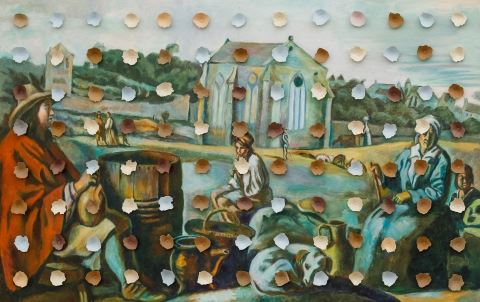
Recommended for you
The Multimedia Art Museum, Moscow presents the exhibition вҖҳFundamental Lexicon. Contemporary Russian Art from the Sinara Foundation CollectionвҖҷ. This exhibition continues the museumвҖҷs long-term strategic programme вҖҳPrivate Collections at MAMMвҖҷ.
The Sinara Foundation was founded in 2022. Today it manages a collection of over 2000 works representing various periods in the history of Russian art since the late 19th century. The Sinara Foundation collection also includes iconic works by classic Russian contemporary art figures вҖ“ these works are displayed in the MAMM exhibition.
The exhibition title refers to Grisha BruskinвҖҷs work вҖҳFundamental LexiconвҖҷ (1986). In 1988 it participated in the legendary SothebyвҖҷs auction in Moscow, which proved a turning point in the artistic life of the USSR and introduced the world to contemporary Russian art, long hidden behind the Iron Curtain. BruskinвҖҷs painting, a visual catalogue of the signs and symbols of the Soviet era, sold for a record amount and immediately acquired the status of a cult work.
The works from the Sinara Foundation collection shown at the exhibition reflect the main, вҖҳfundamentalвҖҷ artistic strategies and trends of contemporary Russian art.
The exhibition spans the period from the 1950s to 2020s, bringing together artists who have defined the development of contemporary Russian art. Among them are former representatives of unofficial culture who are now recognised classics of Russian and international art: Ilya Kabakov, Viktor Pivovarov, Erik Bulatov, Oleg Vasiliev, Vladimir Yankilevsky, Leonid Sokov, Mikhail Roginsky, and others.
Also featured in the exhibition are items by artists of the next generation, whose work was formed on the eve of and during Perestroika, primarily in the legendary squat on Furmanny Lane. These include three members of the famous Mukhomory group вҖ“ Konstantin Zvezdochetov, Sergei and Vladimir Mironenko, as well as Sergei Volkov. Their work was largely a defining style for the Moscow art scene of the late 1980s and 1990s.
Timur Novikov was a recognised leader of Leningrad art life from the 1980s to the 2000s. The Sinara Foundation collection includes his paintings, as well as his renowned fabric appliquГ©s and silkscreen prints.
The exhibition also features pictures by artists who have shaped the artistic landscape of recent decades: Pavel Pepperstein, Irina Korina, Alexandra Paperno, and others.
From the second half of the 1950s to the 1970s, post-war Soviet abstraction, kineticism, op art, metaphysical painting, Moscow conceptualism, Sots Art and others flourished. These pictorial systems existed in parallel with the official artistic doctrine.
In the 1980s marked by political and social change, artistic life was concentrated in studios and squats due to the absence of private galleries and contemporary art museums. Artists occupied abandoned buildings slated for demolition or renovation. In 1985 a squat that had appeared on Furmanny Lane in Moscow became an important centre for contemporary art of the Perestroika era. It housed the workshops of Vladimir and Sergei Mironenko, Konstantin Zvezdochetov and many others. It was at Furmanny that photographer Sergei Volkov began painting, and by 1990 he had already participated in the 44th Venice Biennale of Contemporary Art.
During those same years one of the main artistic forces in Leningrad was the New Artists group. Following the calls of the 1920s Futurists to throw the classics off the ship of modernity, the New Artists ideologue, artist and cultural figure Timur Novikov declared: вҖңWhoever is not with the new is old. He is material for re-compositionвҖқ. The method of re-composition he formulated was aimed at вҖңorganising new art from the oldвҖқ. It is no coincidence that the words вҖҳperestroikaвҖҷ and вҖҳre-compositionвҖҷ frame the portrait of Novikov by Andrei Khlobystin вҖ“ a remarkable artist, art historian, and curator whose work accumulated key elements of the New ArtistsвҖҷ visual language.
Artists defining the current state of contemporary art continue and develop previously established traditions and creative methods. Yet they also devise their own visual and conceptual languages, addressing diverse cultural contexts and codes. For example, in her series вҖҳTemporary PhenomenaвҖҷ (2016), Irina Korina refers to images of the Soviet era, using recognisable fonts from the 1920s to 1980s and transforming her graphic objects into resemblances of Soviet calendars. Ivan Plyusch and Alexandra Paperno address the themes of time and memory in their work.
The history of modern Russian art is still not written and insufficiently analysed. Today private collections play an important role in the systematisation and theoretical understanding of modern artistic practices. Although the collections of major Russian museums such as the Tretyakov Gallery, the Hermitage, the Russian Museum, MAMM and MMOMA contain works by leading Russian authors from the second half of the 20th to the early 21st century, the majority of works by our classic artists are held in private collections. The Sinara Foundation collection consists of works acquired both in Russia and abroad. Some of the works presented at the exhibition are being shown in Russia for the first time, allowing us to expand our knowledge of contemporary Russian art.

 ARTISTS
ARTISTS







